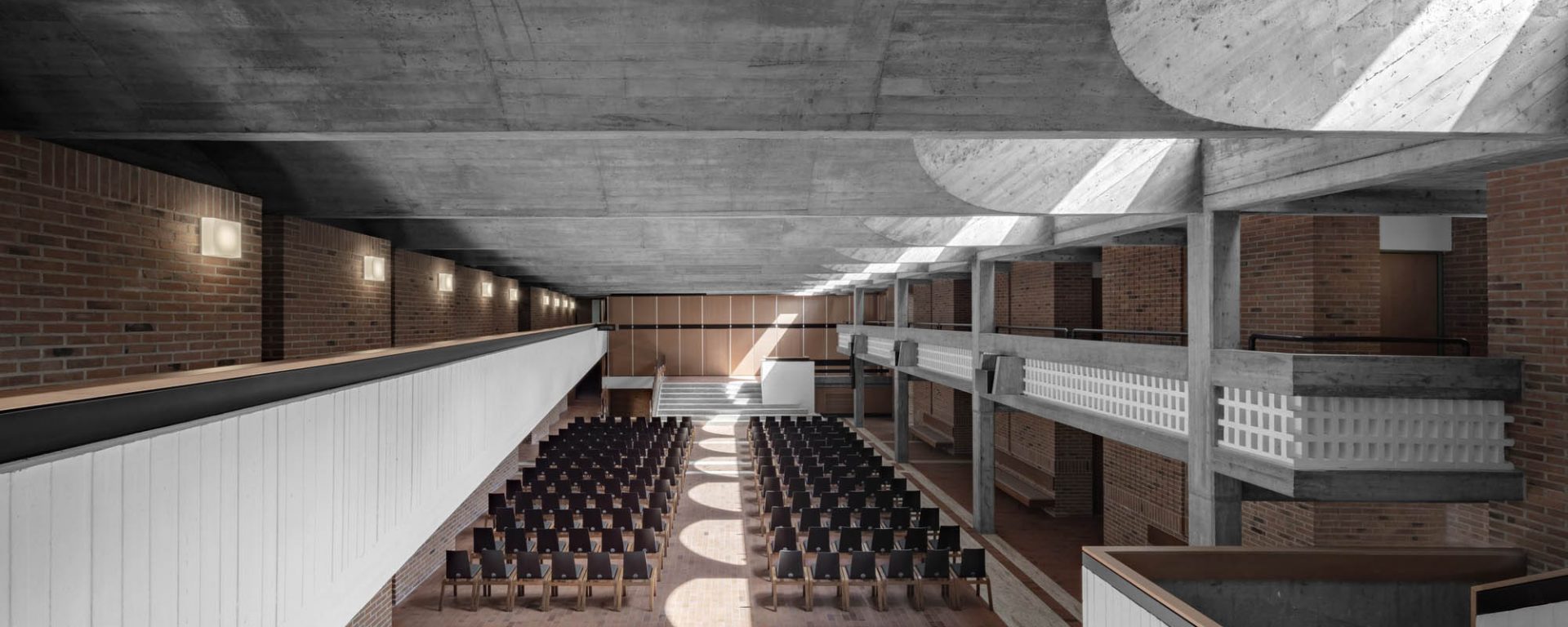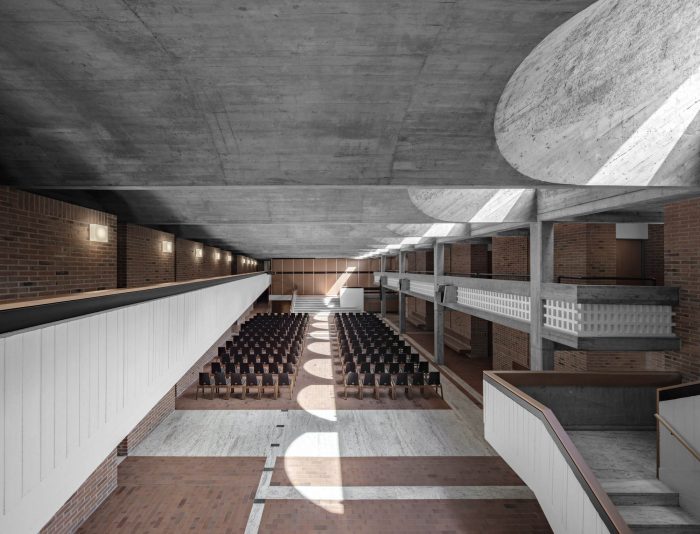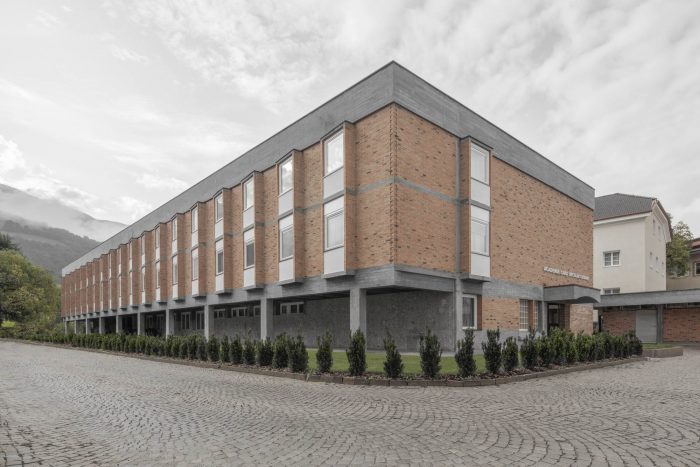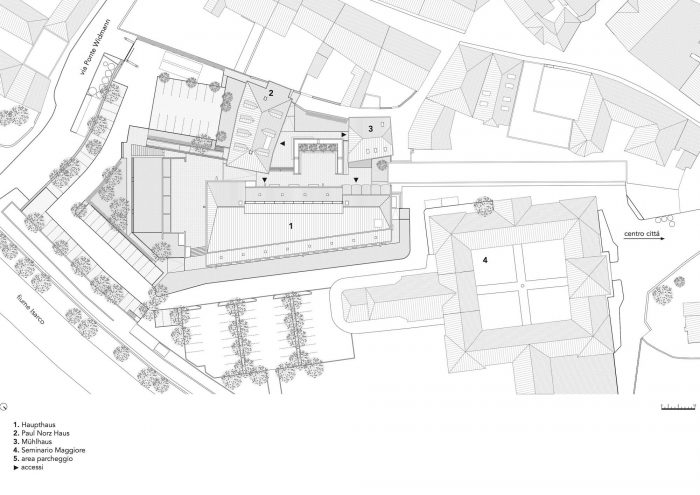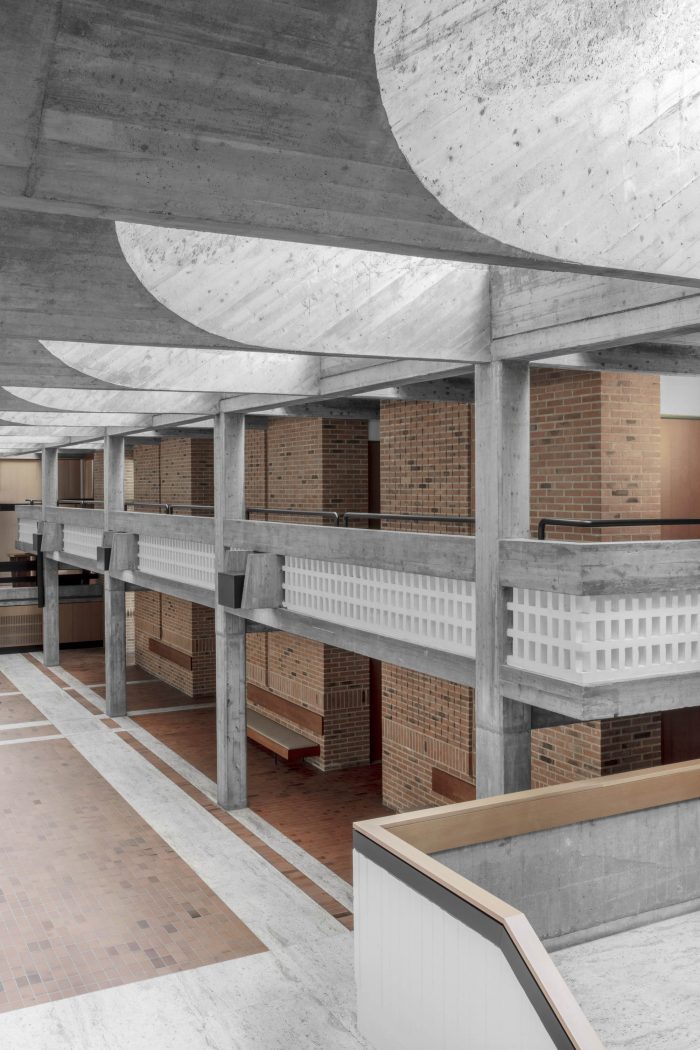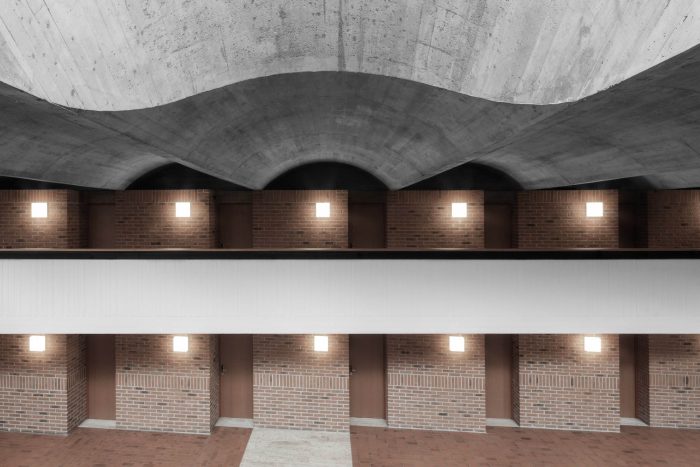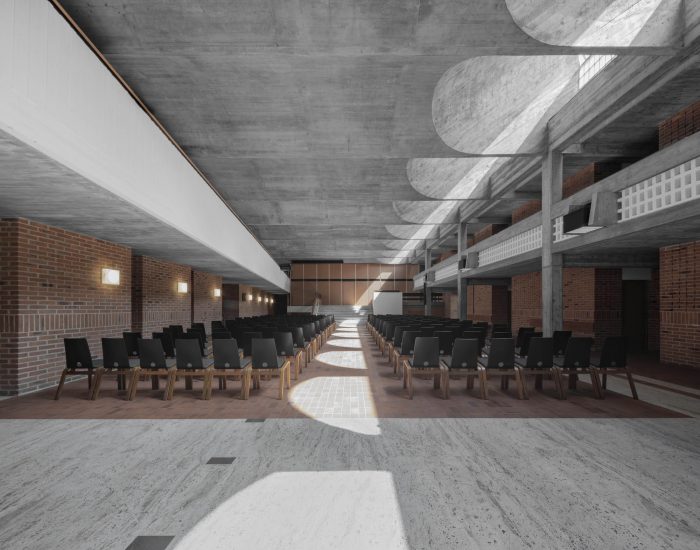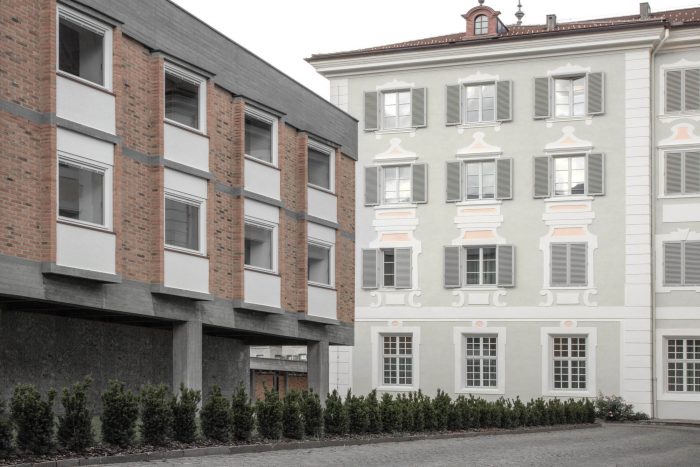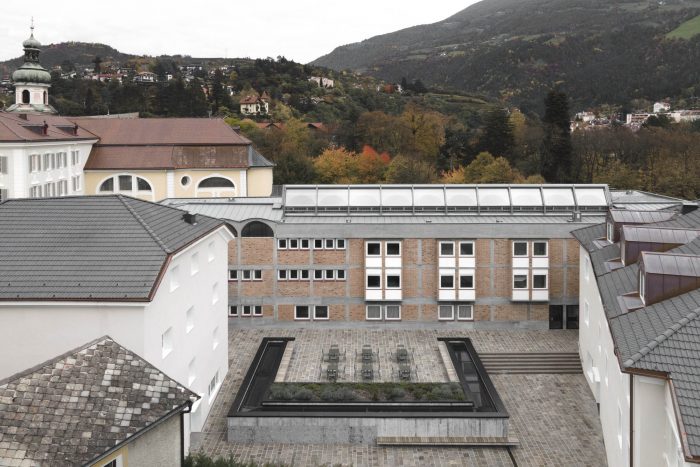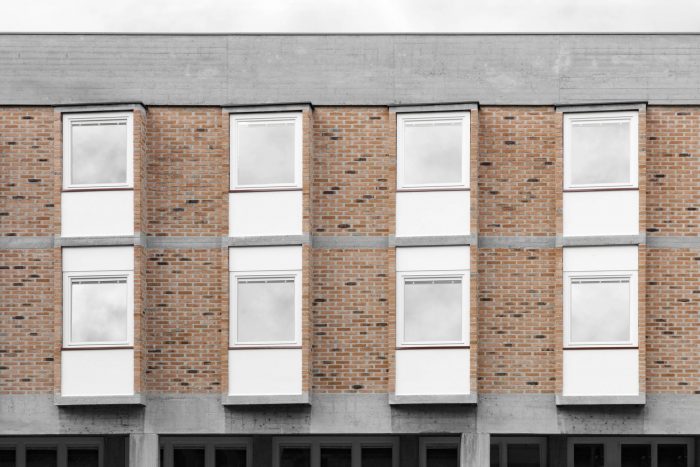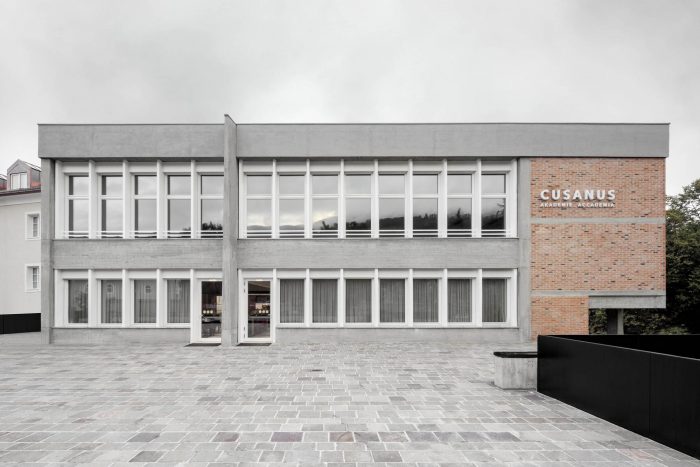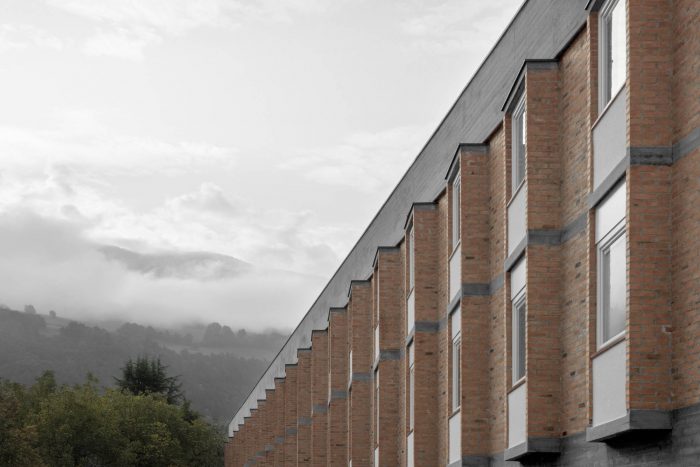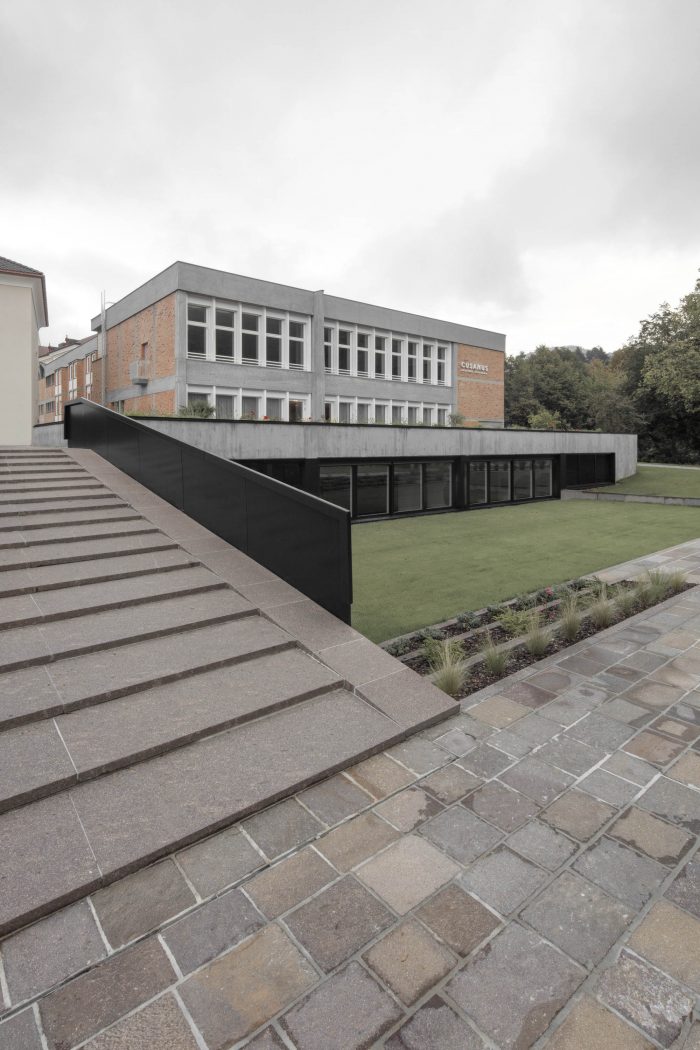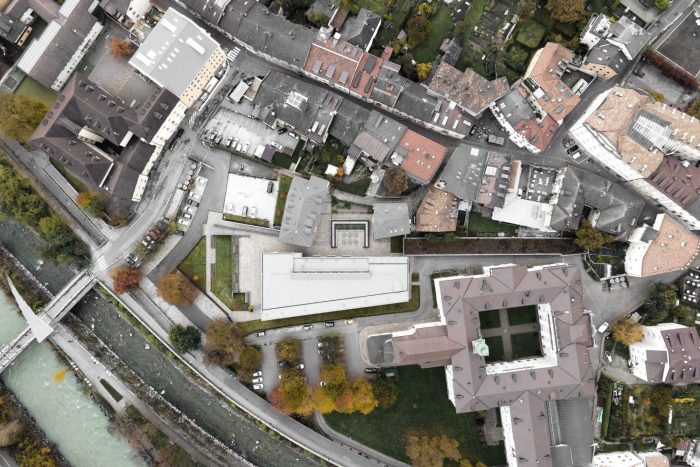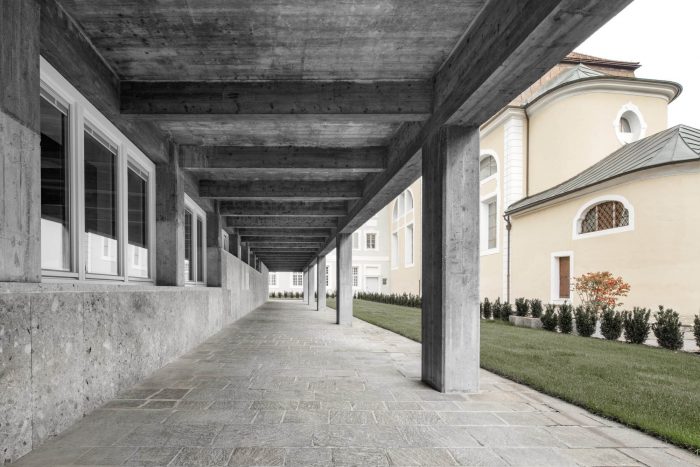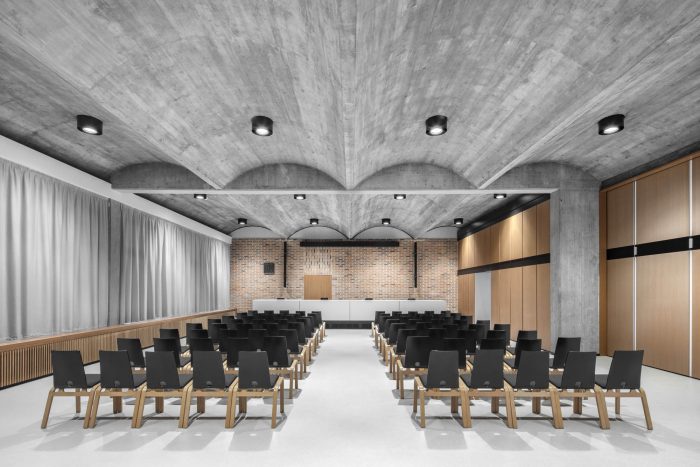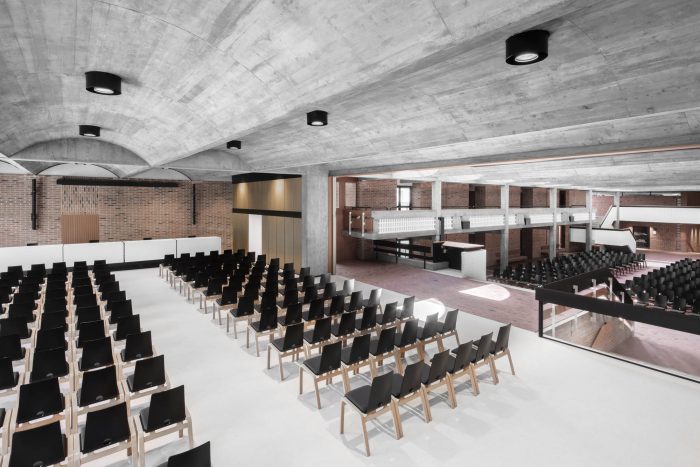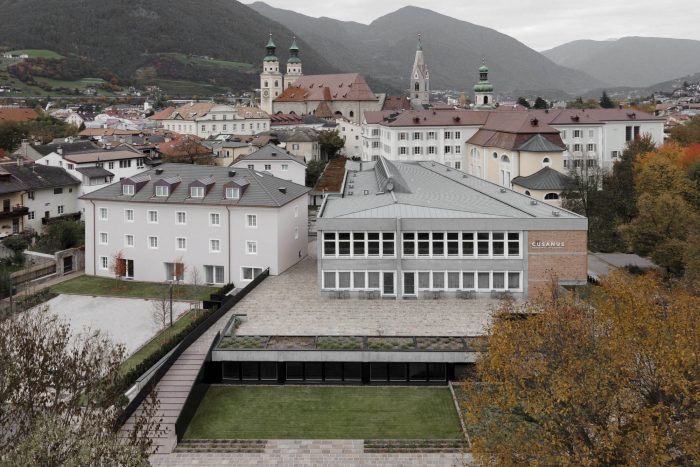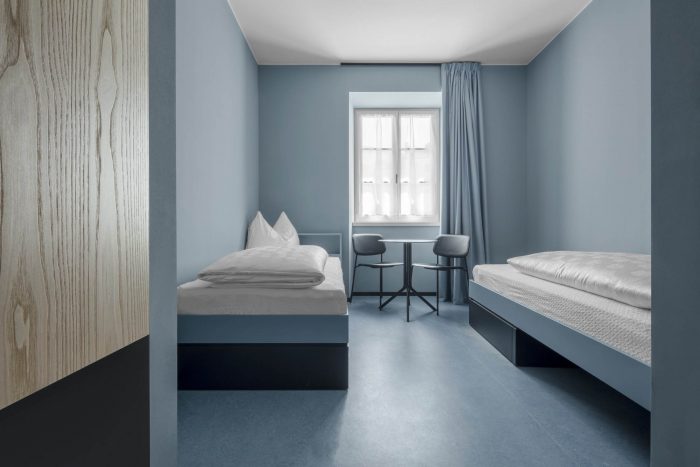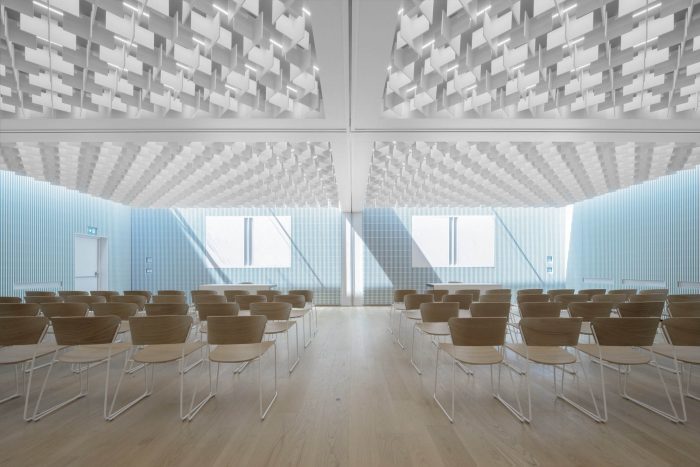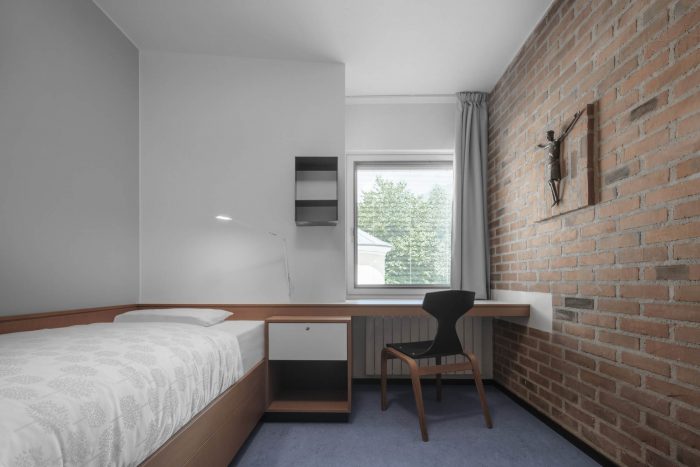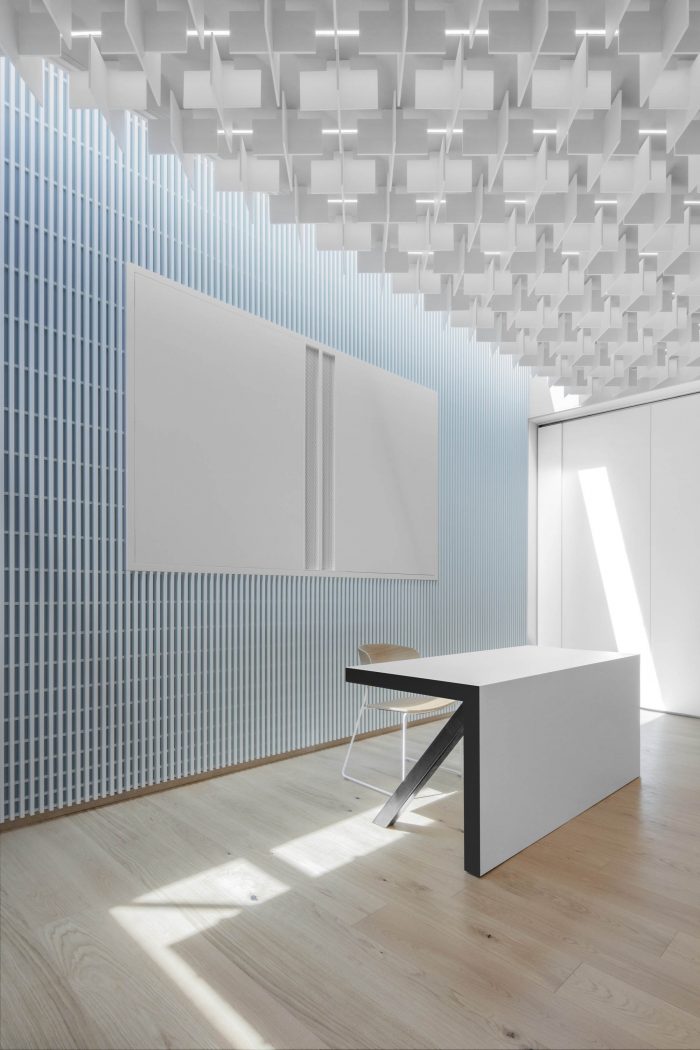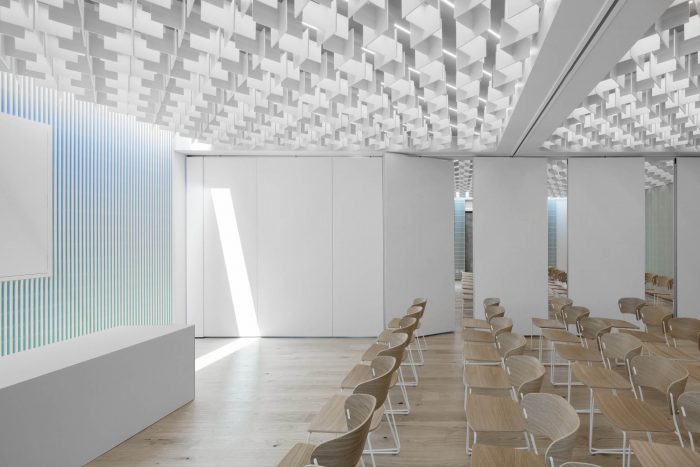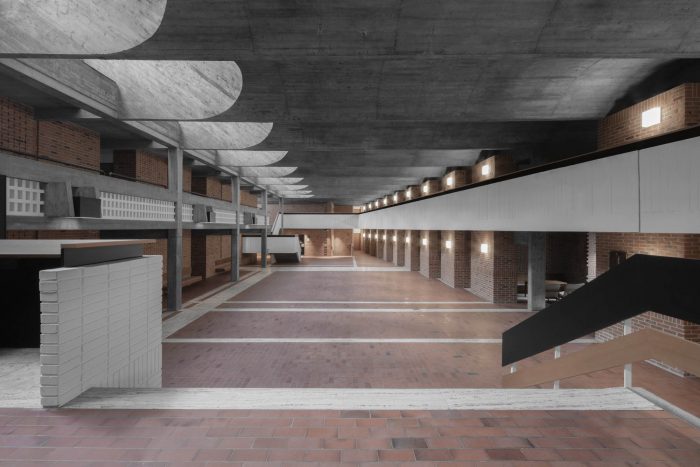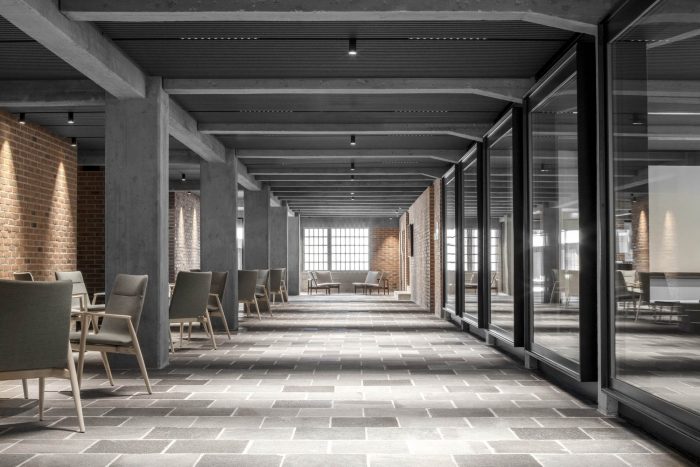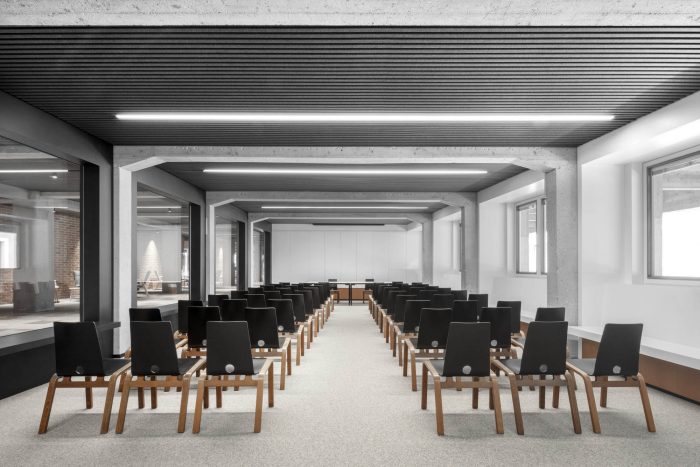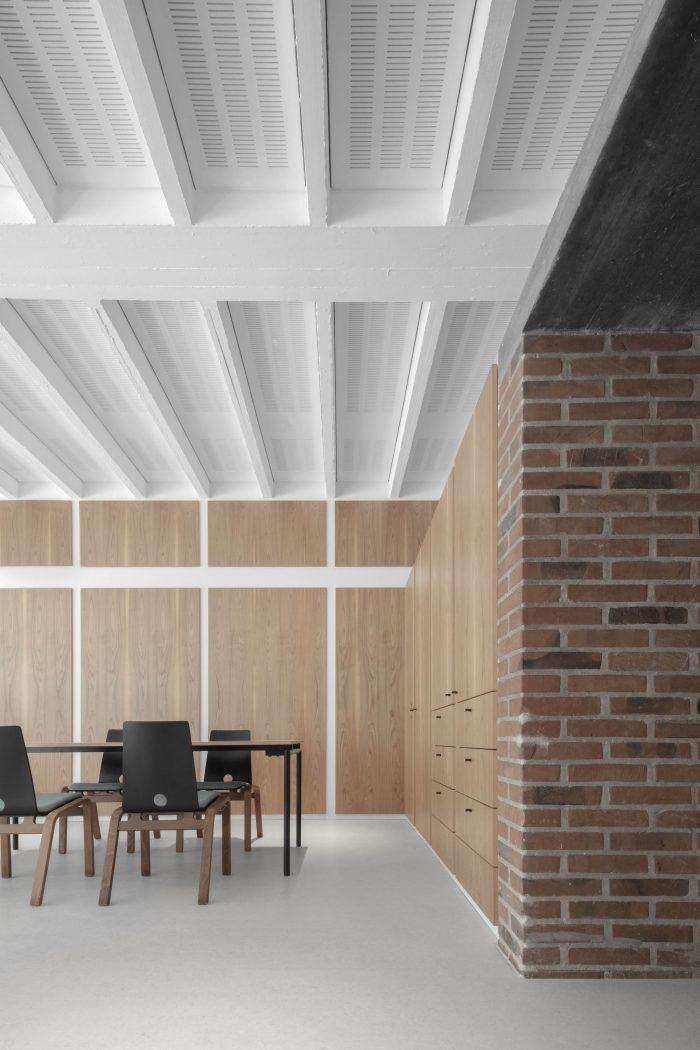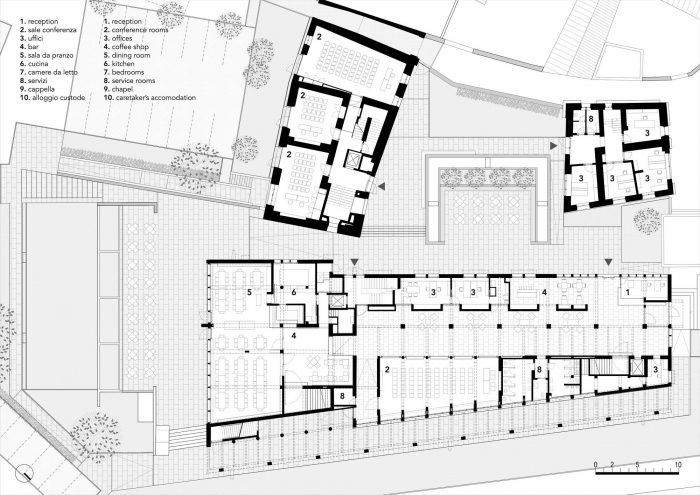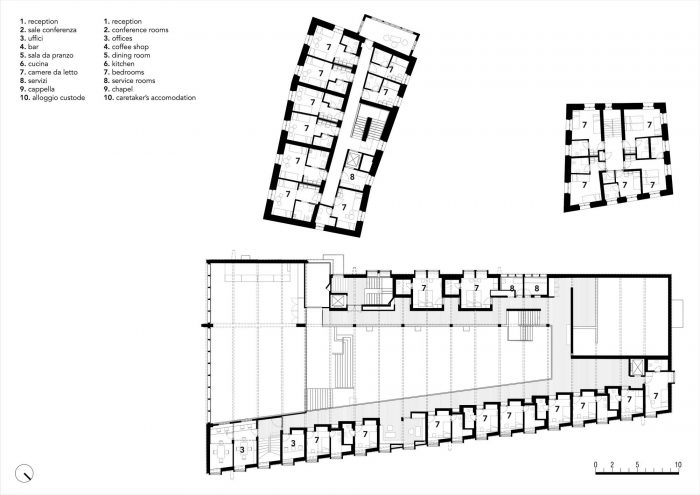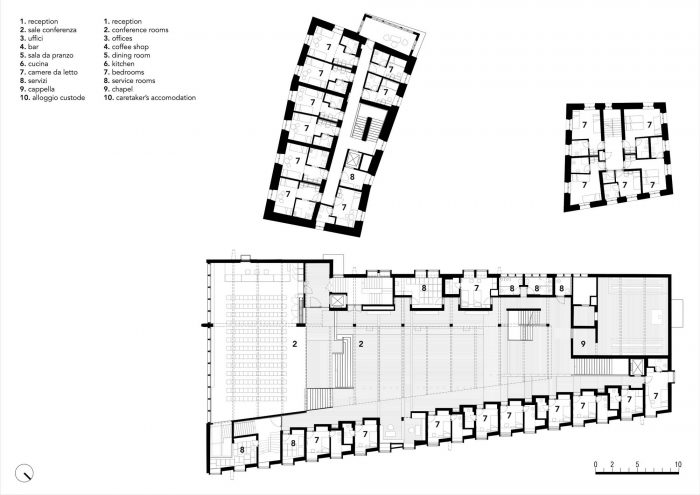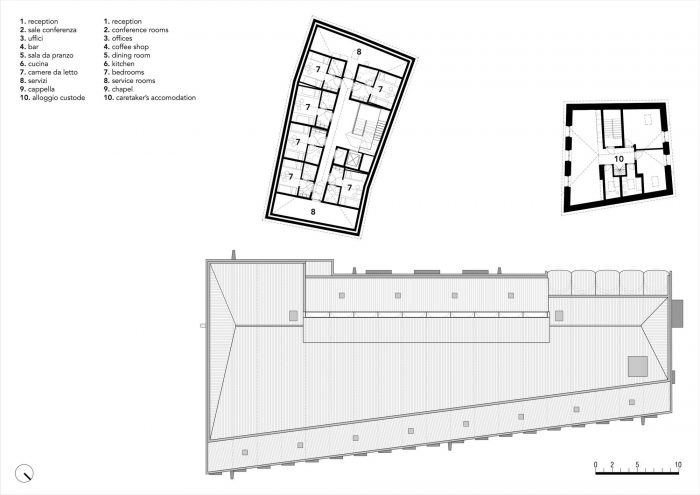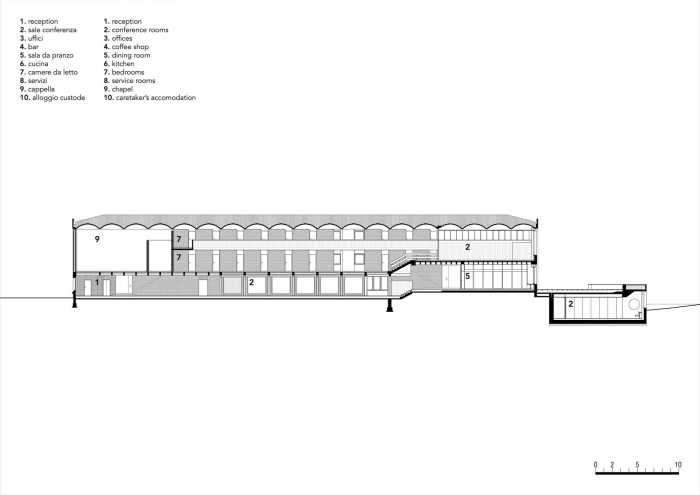在意大利南蒂罗尔州的布列瑟侬,MoDusArchitects采用了一种微妙的设计策略,对库萨努斯学院进行改造和扩建,该学院是一个致力于在宗教和世俗世界交汇处进行思想交流的学习中心。为了让学院与城市更好地互动,该项目通过一系列的干预措施来解决研讨会场所和客人住宿的异质组合,从模拟到公开的新事物,形成一个更有机地连接的综合体,邀请社区进入。
In Bressanone (South Tyrol, Italy), MoDusArchitects adopts a subtle design strategy for the renovation of and addition to the Cusanus Academy, a center of learning dedicated to the exchange of ideas at the intersection of the religious and secular worlds. For the purpose of better engaging the Academy with the city, the project tackles the heterogeneous ensemble of seminar venues and guest accommodations with a spectrum of interventions—mimetic to overtly new—that form a more organically connected complex that invites the community in.
库萨努斯学院位于城市东部的伊萨尔科河畔,由三座建筑组成,分别是保罗-诺尔茨豪斯(Paul Norz Haus)、穆尔豪斯(Mühlhaus)和主楼(Haupthaus),这三座建筑最初是由当地著名的建筑师奥斯玛-巴特(Othmar Barth)设计的,是博尔扎诺省历史保护委员会保护下的第一座现代建筑。在1962年的落成典礼上,这座建筑引发了许多争论:许多人认为这座大胆的现代建筑裸露着砖块和混凝土,与相邻的18世纪的Major Seminary建筑格格不入,而另一些人则欢迎这座在历史悠久的市中心的中世纪结构中增加的现代建筑。今天,该建筑作为布列瑟农的标志性建筑之一,被认为是奥斯玛-巴特的杰作。
Located along the Isarco river in the eastern part of the city, the Cusanus Academy comprises three buildings Paul Norz Haus, Mühlhaus, and Haupthaus, or Main Building, originally designed by the locally renowned architect Othmar Barth – the first modern building listed under the protection of the historic preservation commission of the Province of Bolzano. At the 1962 inauguration, the building triggered much debate: many considered the boldly modern building of exposed brick and concrete to be out of place, an eyesore to the adjacent 18t h century Major Seminary building, while others welcomed the contemporary addition within the medieval fabric of the historical city center. Today the building stands as one of Bressanone’s landmark buildings and is considered to be Othmar Barth’s masterpiece.
通过对Haupthaus的几何分析,我们可以发现它是由三个正方形组成的,它们向南打开,形成了一个不可磨灭的梯形脚印;由此产生的正交秩序和轻微的旋转之间的相互作用,从平面、立面和细节上控制了整个项目。再加上2,90米长的通道,主持结构和表面、开孔和封闭,再到地板材料的图案化,反过来又标志着座位的定位,该建筑是multa paucis–少言寡语说很多话–的一堂深刻的课。
A geometrical analysis of the Haupthaus reveals a plan made by three squares that open up towards the South to form an indelible trapezoidal footprint; the resulting interplay between an orthogonal order and a slight rotation governs the entire project be it in plan, elevation, and detail. Coupled with the 2,90m pass that presides over structure and surface, aperture, and closure, down to the patterning of the floor materials that in turn mark the positioning of the seating, the building is a poignant lesson in multa paucis— saying much with few words.
事实上,该项目精心设计的语法结构与混凝土结构框架、裸露的砖墙和铺路石以及石灰石板的真实尺寸以抽象的顺序汇聚成一个统一的整体。 对MoDusArchitects来说,介入这样一个完整的、有成就感的项目是一项艰巨的任务。
Indeed, the careful grammatical construction of the project converges in an abstract order with the real dimensions of the concrete structural frame, the exposed brick walls and pavers, and the travertine slabs into a unified whole. Intervening in such a complete, and accomplished project proved to be a daunting task for MoDusArchitects.
建筑师:MoDusArchitects
面积: 10625 m²
年份:2020年
摄影:Gustav Willeit
项目组:Giorgio Cappellato, Miriam Pozzoli, Lavinia Antichi, Laura Spezzoni, Anna Valandro
客户:Kardinal Nikolaus Cusanus Akademie
城市:Brixen
国家:意大利
Architects: MoDusArchitects
Area: 10625 m²
Year: 2020
Photographs: Gustav Willeit
Project Team:Giorgio Cappellato, Miriam Pozzoli, Lavinia Antichi, Laura Spezzoni, Anna Valandro
Client:Kardinal Nikolaus Cusanus Akademie
City:Brixen
Country:Italy

